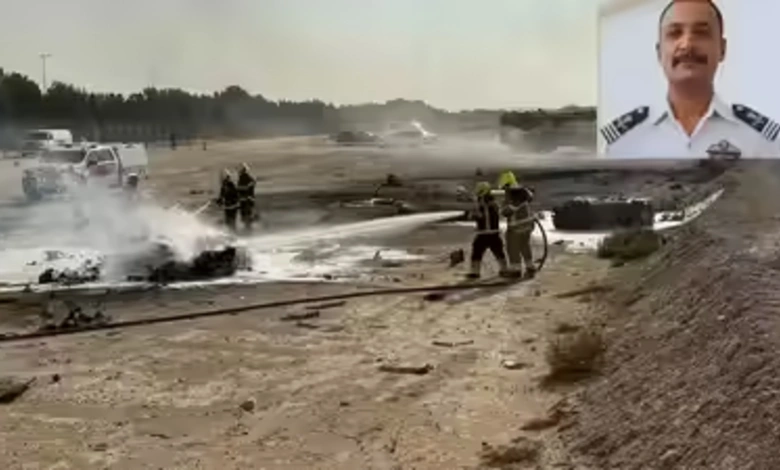Fatal Twist in Dubai Skies: Did Tejas Pilot’s Desperate Ejection Bid Fail at Crucial Moment?

The tragic plunge of an Indian Air Force Tejas fighter jet during a high-stakes aerial display in Dubai has sparked intense scrutiny over whether the pilot managed a last-second ejection attempt amid plummeting altitude.
Wing Commander Namansh Syal, 34, perished when the aircraft suddenly dove and slammed into the ground while executing a daring low-level aerobatic routine at the Dubai Air Show on Friday. Eyewitness footage and preliminary reviews suggest Syal may have pulled the ejection handle in a bid to escape, but the jet’s dangerously low height thwarted any chance of success.
According to IAF insiders, video evidence indicates the manoeuvre spiralled into disaster due to excessive vertical descent during a negative-G turn, leaving no margin for recovery or safe bailout. “It seems the pilot failed to recover from a negative-G manoeuvre at low altitude as the vertical speed of the aircraft was too high, resulting in the crash,” one source revealed.
ALSO READ : Tejas Jet Crash Video Suggests Pilot Tried To Eject Last Minute
Hailing from Patiyalkar village in Himachal Pradesh’s Kangra district, Syal leaves behind his wife—an IAF officer currently in training in Calcutta—their six-year-old daughter, and his parents. The pair, who connected during their initial assignment in Pathankot, tied the knot in 2014.
A formal court of inquiry, swiftly ordered by the IAF, will dissect the incident’s root causes. Investigators are poring over the flight data recorder and cockpit voice recorder to confirm if the ejection sequence initiated, alongside checks on critical variables like altitude and airspeed—key determinants of bailout viability. “The exact cause of the tragedy will be known only after the court of inquiry… It is not clear yet whether the pilot attempted ejection,” the source noted. Ejection outcomes, experts emphasize, hinge on swift pilot response, sufficient height, and optimal velocity.
In a poignant tribute on Saturday, the IAF hailed Syal as a “dedicated fighter pilot and thorough professional.” “He served the nation with unwavering commitment, exceptional skill and an unyielding sense of duty. His dignified persona earned him immense respect… The IAF stands in solidarity with his family in this hour of profound grief and honours his legacy of courage, devotion and honour. May his service be remembered with gratitude,” the statement read. UAE dignitaries, fellow airmen, friends, and Indian embassy staff joined in a solemn farewell.
Graphic clips captured the Tejas—India’s prized indigenous light combat aircraft—mid-stunt, twisting through loops before a catastrophic freefall, impact, and explosive inferno that shrouded the site in thick smoke and debris.
A squadron leader since his 2009 commissioning, Syal graduated from Sainik School in Hamirpur district’s Sujanpur Tira. His father, Jagarnath Syal, a retired Indian Army Medical Corps veteran, later headed an education department institution as principal.
Defence analyst Captain Anil Gaur (retd) pointed to potential G-force overload as a factor, possibly causing disorientation or blackout despite protective gear. “Pilots wear a G-suit so that the blood does not pool in their legs… there might have been an issue with that. What exactly happened can only be determined once the cockpit data is retrieved. I express my condolences to the family of the pilot,” ANI news agency quoted Gaur as saying.
The downed Tejas, deployed from a Tamil Nadu base in Sulur since 2016, marks the second such mishap for the Mk-1 variant—India’s pioneering homebuilt lightweight multi-role fighter—following its fleet entry that year. Unlike a prior incident near Jaisalmer in March 2024, where the pilot ejected unscathed, this is the platform’s first lethal toll. The timing underscores urgency as the IAF gears up for the enhanced LCA Mk-1A rollout, with officials touting the Tejas lineage as a cornerstone of future air power.




